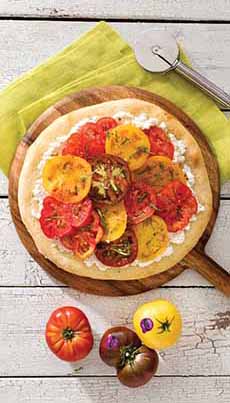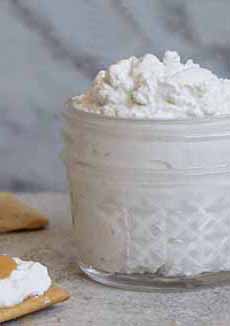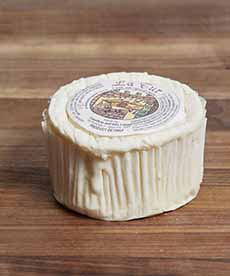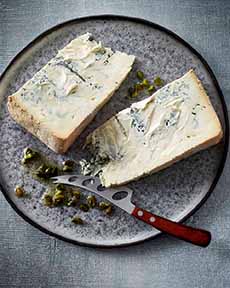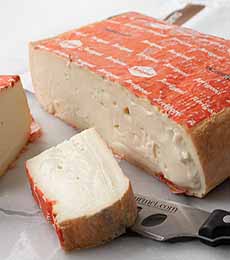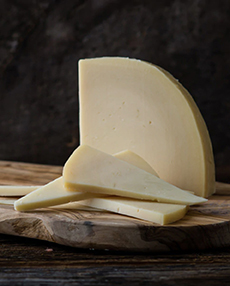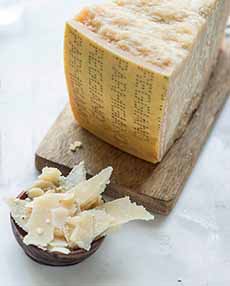National Italian Cheese Month & Types Of Italian Cheese
|
September is National Italian Cheese Month. Italy produces approximately 600 different types of cheeses. Some of their most famous cheeses date back as long as 2,000 years. The European Commission has granted a number of these cheeses protected status; the most famous have the DOP* status. According to Nonna Box, the ancient Romans loved cheese and became skilled cheesemakers and breeders of livestock for goat’s and sheep’s milk cheeses. While any household could make fresh cheese, Romans introduced their aging techniques to make hard cheeses to peoples throughout Europe. Pecorino Romano, a sheep’s milk cheese, was served everywhere from imperial Roman banquets down to the military, where it was a staple food for soldiers in the field due to its long shelf life. A special kitchen for cheese making, called the caseale, was part of many Roman homes. Medieval monasteries in Italy excelled at making high-quality cheese. Cow’s milk cheeses appeared approximately 1,000 years ago when Cistercian monks in the Po Valley of Northern Italy created Grana from extra cow’s milk that they produced. With a uniquely grainy paste (texture), records date it to 1135 at the Abbey of Chiaravalle. Today the cheese is called Grana Padano, meaning grainy cheese of the Po. Parmigiano Reggiano appeared in the 13th century and became so treasured throughout Europe that the English diarist Samuel Pepys buried his wheel of cheese in the ground along with his wine and other valuables when he saw the Great London fire of 1666 was heading straight for his house [source]. After the list of Italian cheeses that follows, we have a delicious recipe for Heirloom Tomato & Ricotta Pizza. > The different types of cheese: a glossary. > All cheeses by category are below. > Italian cheeses by category are below. Here’s a list of many of the 600 Italian cheeses, most of which don’t travel more than locally. Below, we’ve listed cheeses that are most easy to find in the U.S. While systems vary from country to country, there are six basic categories of cheese: And, there are different classification systems that include categories such as Pressed, Soft-Ripened Cheeses, and Semi-Soft Cheeses (as well as Semi-Firm/Semi-Hard Cheeses). Gouda, Cheddar, Parmigiano-Reggiano, for example, are both pressed cheeses and semi-hard (Gouda, Cheddar) or hard cheeses (Parmigiano-Reggiano). In the U.S., one may encounter eight categories: blue, fresh, hard, pasta filata‡‡‡, processed, semi-hard, semi-soft, and soft-ripened. The different classifications may be confusing to the beginning turophile**, but one ultimately gets used to them. A cheese listed with an asterisk* is a DOP cheese (see more in the footnote*). It has a protected designation, meaning it must be made in a specific geographical area, produced from a given type of milk, using time-honored techniques. The system was developed to assure consumers of the characteristics, quality, and authenticity they expect. Examples include agricultural products from Aceto Balsamico di Modena (balsamic vinegar) from Italy, Champagne and Poulet de Bresse chicken from France, Emmentaler cheese from Switzerland, and Traditional Cumberland Sausage from the U.K. There are hundreds of others, including PDO extra virgin olive oils from Croatia, France, Greece, Italy, Portugal, Slovenia, and Spain. The DOP designation was created in 1992, but the French AOC system (Appellation d’Origine Contrôlée/Protégée [AOC/AOP]), which has been incorporated into the E.U. system (except for wines), began in 1937. Thanks to Southern Selects, purveyor of premium produce, for this white pizza recipe. Only the crust is cooked; the ricotta and tomatoes are served fresh on top of it. 1. PREHEAT the oven to 400°F. Sprinkle whole wheat flour onto the countertop and roll out the dough into a round circle, about 1 inch thick. 2. PLACE the dough on a pizza pan and use a fork to poke the dough all over. Brush with olive oil. Bake for 15 minutes or until the crust is golden, then remove and allow it to cool for 10 minutes. 3. WHISK together the ricotta, garlic powder, oregano, salt, and pepper in a small bowl. Spread the ricotta mixture onto the dough and place tomato slices on top of the cheese. Sprinkle with basil and serve with a ramekin of grated parmesan cheese. |
|
|
|
________________ *DOP (Denominazione di Origine Protetta) and PDO (Protected Designation of Origin) are two designations. **A turophile is a lover of cheese. It is formed by the Greek word for cheese, tyros, plus the English -phile, meaning lover. †The mozzarella produced in two areas has PDO status: Mozzarella di Bufala Campana and Mozzarella di Gioia del Colle. Provolone Valpadana has PDO status, as does Ricotta Romana. ‡The cheese can be semihard or hard, depending on length of aging. ‡‡A white pizza, pizza bianca in Italian, is one that does not use tomato sauce. Instead, white cheese, commonly ricotta, goes directly on top of the crust. A white pizza can also include mozzarella and parmesan. ‡‡‡Pasta filata (“pulled curd”) cheeses like mozzarella, provolone, and string cheese are named for the unique process of pulling the curds while they are dipped in hot water. The result is a paste that can be pulled apart in strips. CHECK OUT WHAT’S HAPPENING ON OUR HOME PAGE, THENIBBLE.COM.
|
||
